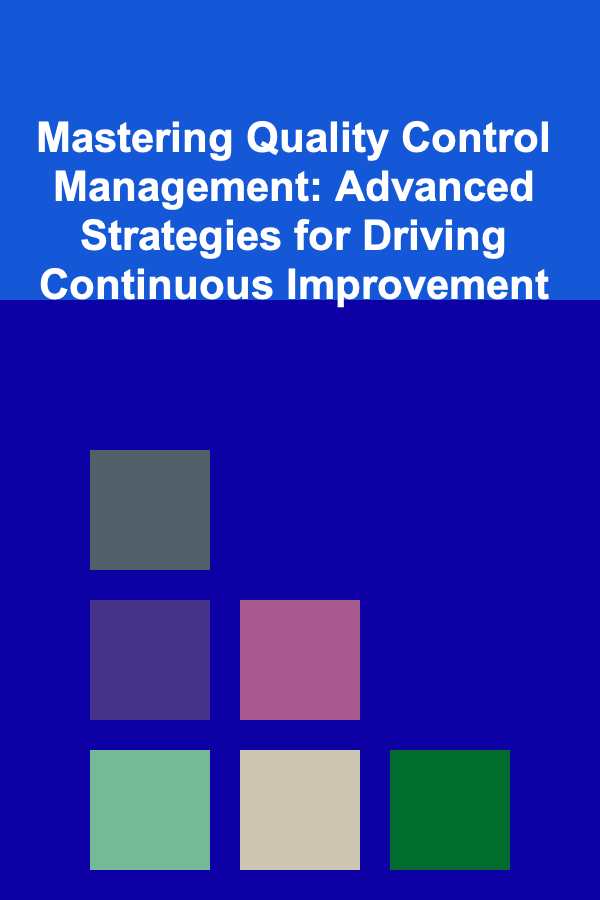
Smart Saving for Retirement Strategies to Maximize Your Nest Egg
ebook include PDF & Audio bundle (Micro Guide)
$12.99$5.99
Limited Time Offer! Order within the next:

Retirement may seem like a distant goal, but the earlier you start planning, the more you can leverage the power of compounding and strategic investing. If you're aiming to maximize your retirement savings, it's crucial to adopt smart strategies that focus on long-term wealth accumulation while minimizing risks. The goal isn't just to save money---it's to create a nest egg that will support you comfortably when you're no longer working. This guide provides actionable steps and expert strategies to help you maximize your retirement savings and secure your financial future.
Start Saving Early---Time Is Your Best Friend
The sooner you begin saving for retirement, the more you can benefit from compound interest. The power of compounding allows your savings to grow exponentially over time, especially if you invest in assets with the potential for high returns, like stocks or mutual funds.
Actionable Steps:
- Open a Retirement Account: Whether it's a 401(k), Roth IRA, or traditional IRA, opening a retirement account early on can help you take advantage of tax benefits and ensure your savings are invested for growth.
- Set Automatic Contributions: Automate your savings so that a portion of your income is directly deposited into your retirement account each month. This forces consistency and removes the temptation to skip contributions.
- Start with Small Contributions: Even if you're just starting out, contribute what you can. Small contributions made early are often more effective than large contributions made later due to the time value of money.
The earlier you begin, the more time you have to benefit from growth and the less you need to contribute on a regular basis.
Max Out Employer Contributions
If your employer offers a 401(k) match, make sure you're taking full advantage of this benefit. It's essentially free money that will help boost your retirement savings without you having to do much extra. Missing out on employer contributions is like leaving money on the table.
Actionable Steps:
- Contribute at least enough to get the full match: Find out the matching policy your employer offers (e.g., 50% of the first 6% of your salary) and make sure to contribute at least that amount.
- Review your employer's retirement plan: Look for any changes in contribution limits or matching policies. If your employer changes the match or contribution structure, adjust your savings accordingly.
Employer contributions can be a powerful tool for rapidly growing your retirement funds, so don't leave them unused.
Take Advantage of Tax-Advantaged Accounts
Retirement accounts like 401(k)s, IRAs, and Roth IRAs offer tax advantages that can significantly boost your retirement savings. Understanding the difference between tax-deferred and tax-free accounts will help you choose the right option for your financial goals.
Actionable Steps:
- Contribute to a 401(k) or Traditional IRA: Contributions to these accounts are made pre-tax, which means they reduce your taxable income in the year you contribute, resulting in immediate tax savings.
- Open a Roth IRA: A Roth IRA allows for tax-free withdrawals in retirement. Although contributions to a Roth IRA are made after-tax, the growth and withdrawals are tax-free, which is a powerful benefit.
- Consult a Tax Advisor: Since there are income limits and contribution limits for both traditional and Roth IRAs, it's wise to consult with a tax advisor to determine the best approach for your unique situation.
Using tax-advantaged retirement accounts can greatly improve your savings potential by allowing your money to grow faster, either through tax-free growth or tax-deferred contributions.
Diversify Your Investments
When it comes to investing for retirement, diversification is key to minimizing risk and optimizing returns. A diverse portfolio ensures that your investments aren't tied to the performance of a single asset class, reducing the impact of market fluctuations.
Actionable Steps:
- Mix asset classes: A well-diversified portfolio should include stocks, bonds, real estate, and perhaps alternative assets. Consider the risk tolerance of each asset class, and balance them according to your age and risk preferences.
- Use Target-Date Funds: Many retirement accounts offer target-date funds, which automatically adjust the asset allocation as you approach retirement. These funds gradually shift from more aggressive investments to safer ones as you age.
- Rebalance your portfolio periodically: Over time, some investments will outperform others, which can throw your asset allocation off balance. Review and rebalance your portfolio at least once a year to ensure it still aligns with your risk tolerance and retirement goals.
Diversification can significantly reduce risk while providing opportunities for steady growth in your retirement portfolio.
Save More Than the Minimum
While contributing enough to get the full employer match is essential, many experts recommend saving more than the minimum. A good rule of thumb is to aim for saving 15% of your pre-tax income for retirement, if possible.
Actionable Steps:
- Increase your contributions over time: When you receive a raise, bonus, or tax refund, consider increasing your retirement savings proportionally. If you're used to living on your current salary, try to put that extra money directly into your retirement account.
- Aim for 15% or more: If saving 15% of your income feels difficult, start with a smaller percentage and gradually increase it as you become more comfortable with the process.
The more you save, the faster your retirement nest egg will grow, ensuring you have enough funds to support yourself when you retire.
Consider Catch-Up Contributions if You're Over 50
If you're nearing retirement age and haven't saved as much as you'd like, catch-up contributions allow those 50 and older to contribute additional funds to their retirement accounts.
Actionable Steps:
- Maximize catch-up contributions: For 401(k)s, you can contribute an additional $7,500 per year if you're 50 or older. For IRAs, you can contribute an extra $1,000.
- Adjust your budget: To take full advantage of catch-up contributions, you may need to adjust your monthly budget to prioritize retirement savings.
Catch-up contributions are an excellent tool for those who are getting a late start, allowing them to maximize their savings in their final working years.
Keep Retirement Costs in Mind
As you save for retirement, it's important to think about how much money you will need to live on in retirement. While you may want to aim for a large nest egg, it's crucial to have a realistic estimate of your retirement expenses.
Actionable Steps:
- Estimate your retirement expenses: Consider housing costs, healthcare, food, and entertainment. Don't forget to account for inflation when estimating future expenses.
- Use retirement calculators: Many online tools and calculators can help you estimate how much you need to save based on your expected expenses in retirement. Use these tools regularly to keep track of your progress.
Knowing how much you need to save will help you determine if you need to increase your contributions and adjust your investment strategy.
Plan for Healthcare Costs in Retirement
Healthcare can be one of the largest expenses in retirement, and it's often an overlooked aspect of retirement planning. Medicare may cover some expenses, but it doesn't cover everything.
Actionable Steps:
- Consider a Health Savings Account (HSA): If you're eligible, contribute to an HSA, which offers tax benefits and can be used to cover medical expenses in retirement.
- Research long-term care insurance: While it's not always necessary for everyone, long-term care insurance can help you cover potential healthcare costs as you age.
Planning for healthcare is essential, as it's a major part of retirement planning that is often underestimated.
Avoid Early Withdrawals and Loans from Your Retirement Accounts
It may be tempting to dip into your retirement savings early, but doing so can derail your long-term financial goals. Early withdrawals are often subject to penalties and taxes, and loans from retirement accounts can hinder your future growth potential.
Actionable Steps:
- Avoid taking early withdrawals: If possible, leave your retirement funds untouched until you reach the appropriate retirement age. Early withdrawals can significantly reduce the power of compounding.
- Don't borrow from your 401(k): Loans from 401(k) accounts should be avoided, as they reduce the balance of your retirement account and may limit growth.
By keeping your funds in your retirement account, you allow your investments to grow undisturbed.
Consult a Financial Advisor
While saving for retirement can be straightforward, navigating the best strategies for your personal situation can be complex. A financial advisor can help you tailor a retirement plan that takes into account your goals, risk tolerance, and time horizon.
Actionable Steps:
- Find a reputable financial advisor: Look for a certified financial planner (CFP) or retirement specialist who can help you optimize your retirement savings plan.
- Review your strategy annually: Your retirement goals and financial situation may change over time. An advisor can help you adjust your plan to stay on track.
A financial advisor can provide the guidance you need to ensure your retirement savings strategy is both effective and efficient.
Conclusion
Maximizing your retirement savings requires more than just putting money into an account. It involves understanding the different types of accounts, making strategic investments, and taking advantage of tax benefits. The key is starting early, saving consistently, and making smart decisions along the way. By following these actionable steps, you can create a strong financial foundation for retirement and ensure that your nest egg will support you for years to come.

How to Stage a Home to Make It Feel Cozy and Inviting
Read More
How to Style Your Holiday Gifts as Part of Your Home Decor
Read More
How to Use Underlayment for Soundproofing Floors
Read More
How to Utilize Drawer Organizers for Desk Supplies
Read More
Mastering Quality Control Management: Advanced Strategies for Driving Continuous Improvement
Read More
Unlocking Potential: A Comprehensive Guide to Executive Development Through Coaching
Read MoreOther Products

How to Stage a Home to Make It Feel Cozy and Inviting
Read More
How to Style Your Holiday Gifts as Part of Your Home Decor
Read More
How to Use Underlayment for Soundproofing Floors
Read More
How to Utilize Drawer Organizers for Desk Supplies
Read More
Mastering Quality Control Management: Advanced Strategies for Driving Continuous Improvement
Read More